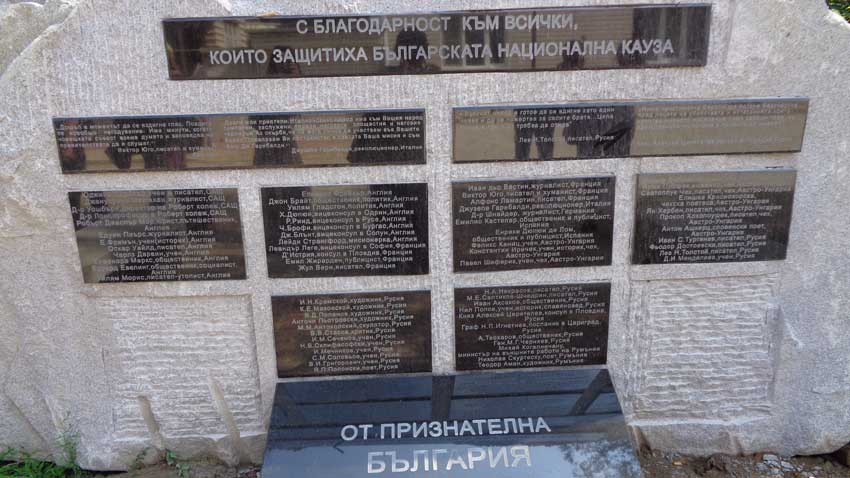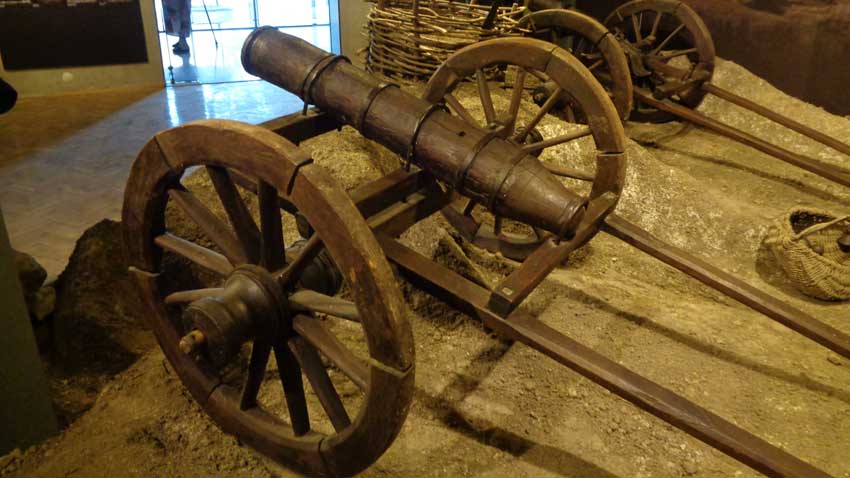Four venerable old houses from the National Revival period in the town of Panagyurishte have been restored to their former splendor after restoration work funded under the Operational Programme Regional Development, 2007-2013. The project called Panagyurishte – capital of liberty takes us back to the heroic times of the 1876 April uprising – the climax of the liberation struggles of the Bulgarians against the Ottoman Empire. One of the houses, known as the Toutev house is connected with a memorable day in the country’s history – April 20, 1876.

“The Panagyurishte revolutionary committee, headed by Pavel Bobekov, Panayot Volov, Georgi Benkovski, Zahari Stoyanov came out of this very gate, that has been preserved to this day, to proclaim the outbreak of the uprising to the people of Panagyurishte,” says Irina Boteva, chief curator of the Museum of History in the town.
Ivan Toutev, the well-to-do owner of the house was also involved in the uprising. Not far from here is the house belonging to Ivan Lekov, an affluent merchant, where Vassil Levski – the man who created a network of revolutionary committees across Bulgaria – frequently stayed. The house is also famed for its unique wall paintings.

The Doudekov house gave shelter to dozens of women, children and old people who were on the run after the uprising was crushed. When the town was burnt down, the home of 20-year old teacher Rayna Popgeorgieva, better known as Princess Raynia, was miraculously left standing. Rayna was the woman who  embroidered the flag used in the rebellion, with a lion standing on its hind legs and the words Freedom or death; on the day it was consecrated, she rode through the town on horseback, alongside the men from what has gone down in history as Benkovski’s Flying Squadron. The ensuing dramatic fate of the young teacher and the people of Panagyurishte, the massacres on a massive scale when the rebellion in the Bulgarian lands was crushed reverberated across the globe, prominent figures like Victor Hugo, Tolstoy, Dostoyevsky, Garibaldi, William Gladstone, journalist Januarius McGahan all raising a voice in support of the Bulgarians.
embroidered the flag used in the rebellion, with a lion standing on its hind legs and the words Freedom or death; on the day it was consecrated, she rode through the town on horseback, alongside the men from what has gone down in history as Benkovski’s Flying Squadron. The ensuing dramatic fate of the young teacher and the people of Panagyurishte, the massacres on a massive scale when the rebellion in the Bulgarian lands was crushed reverberated across the globe, prominent figures like Victor Hugo, Tolstoy, Dostoyevsky, Garibaldi, William Gladstone, journalist Januarius McGahan all raising a voice in support of the Bulgarians.
With funding under the project, the people of Panagyurishte were able to raise a “wall of thankfulness” with the above-mentioned names and the names of all those who have contributed to the resolution of the “Bulgarian issue” and ultimately – to the liberation of Bulgaria.

Here is more from project manager Velko Sapoundjiev:
“We have reconstructed and renovated the Museum of History in Panagyurishte, where we built a visitor information centre with an audio-visual hall. The second floor as well as the basement house expositions.”

The project also envisages the renovation of the related infrastructure - new cobblestones and pavement slabs have been laid. The repair work meets the requirements for easy access by people with impaired mobility. Notice boards have been put up at the town’s four entrance points, directing visitors to the tourist information centre and the most important landmarks. In the words of Panagyurishte mayor Nikola Belishki, the project will serve as the basis for further work in future, so as to make the town even more attractive to tourists.
“I am pleased to say that together with my team we have put in place projects here in the past two years, worth a total of BGN 100 million (EUR 50 million) under the operational programmes Environment, Regional Development and Administrative Capacity. We have projects amounting to over BGN 30 million as public-private partnerships. We never regard any of them as something separate, quite the opposite, we always see them as one integrated whole. With one single idea: to help Panagyurishte preserve its spirit and its tradition.”
English version: Milena Daynova
Photos: Veneta Pavlova
The 85 th anniversary since Southern Dobrudzha returned within the bounds of Bulgaria will be celebrated with an official ceremony on 1 October in Silistra, the Bulgarian news agency BTA reports. Representatives of the local and central..
Bulgarian Patriarch Daniil met with Ecumenical Patriarch Bartholomew in Thessaloniki, the Bulgarian Patriarchate announced. The two discussed the centuries-old spiritual ties between the Ecumenical Patriarchate of Constantinople and the Orthodox..
On September 22, 1908, Prince Ferdinand I proclaimed Bulgaria’s independence in a manifesto, formally establishing the Third Bulgarian Kingdom. The location was chosen with care: the Church of the Forty Martyrs in the old capital, Veliko Tarnovo,..
In today’s world, where material values overshadow the spiritual, reflections on the salvation of souls somehow remain in the background. The constant..

+359 2 9336 661
